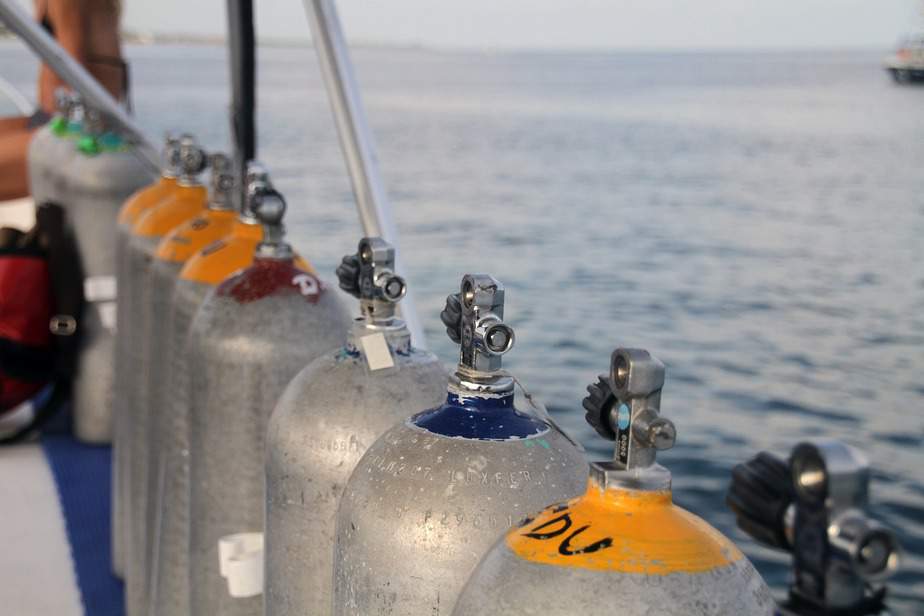If you are new to scuba diving, you might be wondering why scuba diver’s don’t use pure oxygen when diving. Standard compressed air is made up of 21% oxygen, 78% nitrogen and 1% other gases. Some common problems divers have diving with compressed air is nitrogen narcosis and decompression sickness, both of which are caused by having too much nitrogen in their system. Wouldn’t it follow, then, that breathing 100% oxygen with no nitrogen would prevent this?
Scuba divers don’t breathe pure oxygen because too much oxygen will cause oxygen toxicity. The symptoms of oxygen toxicity are nausea, dizziness, blurred vision, muscle twitches, damaged lungs, and seizures. There are legitimate times when divers can temporarily breathe pure oxygen such as treating someone who is suffering from decompression sickness. It’s safer to breathe compressed air or enriched air nitrox while staying within depth and no-decompression limits.
In this article, we’ll discuss in further detail why it’s generally not a good idea to use pure oxygen when scuba diving and when it is acceptable to breathe pure oxygen temporarily. Let’s dive in.
Why don’t divers use pure oxygen?
Most recreational divers will get by with just compressed air. Divers who want to have longer bottom times may learn to dive nitrox, which is a breathing gas with a higher oxygen percentage than 21% (but still far away from 100%).
The difference between compressed air and the air in the atmosphere is that a scuba compressor removes any pollution and crams a bunch of air into the scuba tank so that we can breathe from it for a long time. Basically, it’s cleaner than the air we normally breathe. It sounds pretty underwhelming, so why then is compressed air the most popular breathing gas?
Economic factors

Since compressed air is just filtered air, and it is available in abundance, it is extremely cheap to fill a tank with it compared to nitrox or trimix mixes. With how costly scuba diving can be if you own all of your scuba gear and want to get a bunch of certifications, this is a very attractive option.
All you need to fill a scuba tank with safe, breathable air is a scuba compressor with a good filter. This equipment is relatively accessible and every dive shop should have one. Since the gas itself is free (because air is everywhere), as long as a dive shop has a scuba compressor and a way to power it, it can fill your scuba tanks.
Before nitrox and trimix became more popular, in the early days of scuba diving, even in remote tropical locations, compressed gas was readily available everywhere.
Filling a tank with pure oxygen, however, was trickier. It requires large oxygen tanks that are used to transfill smaller diving tanks. This requires special and costly equipment called oxygen generators. Both large oxygen tanks and oxygen generators are not readily available, so its availability is limited and limited by cost.
It’s also much faster to fill a scuba tank with compressed air than from an oxygen cylinder, which allows more orders to be fulfilled in a busy dive resort.
Furthermore, if a scuba tank is to be filled with pure oxygen for diving purposes, it requires a special tank and regulator to safely use the oxygen at such high concentrations. Additionally, pure oxygen is highly flammable and specialists are needed to fill the tanks safely.
For these reasons plus the risk factor, it’s not surprising that oxygen can be as much as 10x more expensive than compressed air.
Risk of oxygen toxicity
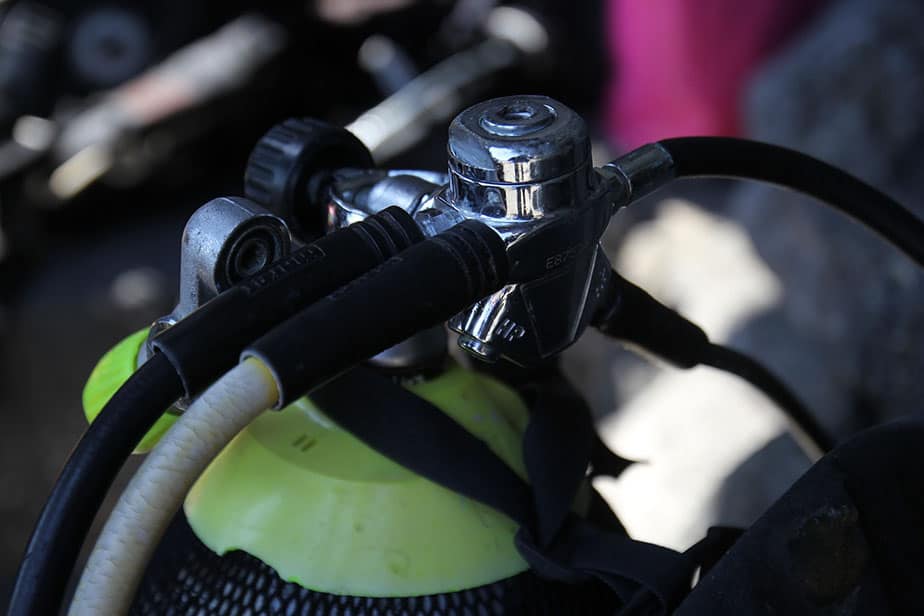
Not only is pure oxygen expensive and risky to handle, it’s also risky for the diver to breathe. Even if you could easily afford the cost, the biggest issue is still the fact that too much oxygen in the body is harmful.
A risk of breathing gas mixes with a higher concentration of oxygen, let alone pure oxygen, is central nervous system (CNS) oxygen toxicity. Our blood and lungs are used to handling air with only 21% oxygen in it. High concentrations of oxygen can overwhelm our lungs and blood, affecting the CNS, lungs, heart, and brain.
Divers may experience fluid in the lungs, chest pains, difficulty breathing (ironically), loss of vision, and seizures. As you can imagine, if you experience any of these symptoms underwater, you are at serious risk of drowning.
Now thankfully, oxygen toxicity is generally not an issue for recreational divers when breathing compressed air. Divers would have to be at a depth of 55 m / 180 ft before the water pressure causes the compressed air to become toxic to breathe.
However, when a diver breathes pure oxygen, they would only be able to dive to 4 m / 13 ft before the oxygen becomes toxic. There are limited uses for pure oxygen while diving during technical diving, which we’ll examine in the next section.
When and how can divers safely breathe pure oxygen?
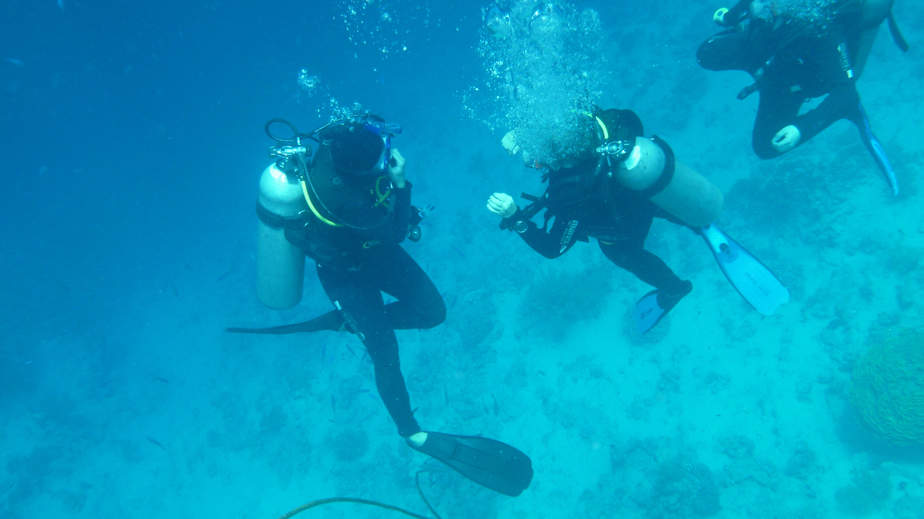
We mentioned that divers can breathe pure oxygen underwater provided they are within 4 m / 13 ft from the surface, otherwise it would be too toxic to breathe compressed pure oxygen. The divers need equipment that can specifically handle pure oxygen, such as the regulator and dive computer, to be able to dive safely.
On land, one can breathe pure oxygen for short periods of time. For instance, pure oxygen is used in hospitals when a patient is struggling to breathe, so pure oxygen may be used to help the patient get sufficient oxygen into their bodies. Obviously this is carefully monitored and done by health professionals, otherwise it’s not recommended you breathe pure oxygen even at the surface.
The reason is that breathing pure oxygen for too long can cause internal surface damage to your lungs. As such, pure oxygen is only used in emergencies where it may be worth risking some lung damage to save the patient’s life, such as when treating decompression sickness.
Common misconception of breathing pure oxygen
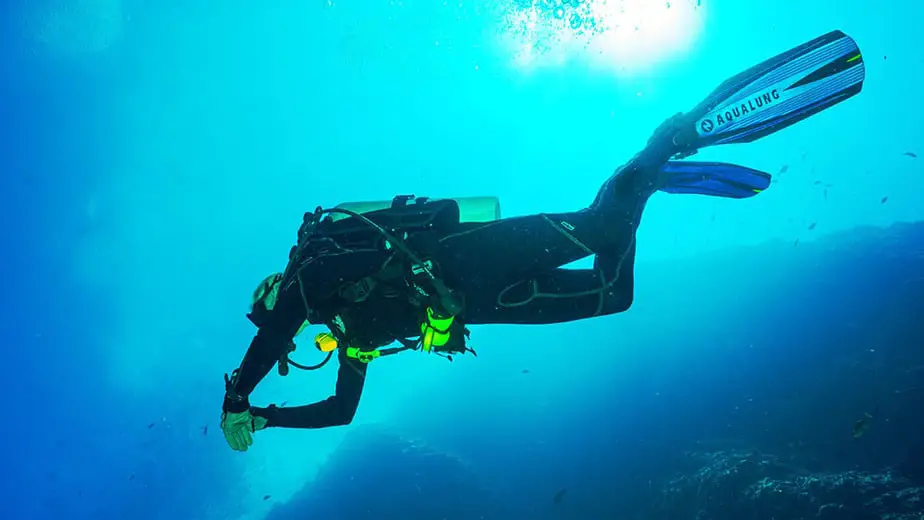
When someone is pondering if it is possible to breathe pure oxygen underwater, often what they are really wondering is if there is a breathing gas that has a low percentage of nitrogen so that they can dive deeper and longer without risking nitrogen narcosis or decompression sickness (hint: there is, and it’s not pure oxygen).
Enriched air nitrox is not the solution either because it decreases the nitrogen percentage by increasing the oxygen percentage, which makes oxygen toxicity an even greater risk when diving deep. It does, however, make it possible for one to dive longer at shallower depths.
The real solution that gives the best of both worlds is diving trimix. Trimix adds a third gas to the mix: helium. By decreasing the amount of nitrogen in the mix and replacing it with helium, which is a stable inert gas, divers decrease the chances of nitrogen narcosis and the bends.
There are various trimix mixes, however the one that we’re going to focus on is hypoxic trimix. At depths of around 60 m / 200 ft, technical divers would switch to a 10/70 mixture. That means a mix with 10% oxygen, 70% helium, and 20% nitrogen. You’ll notice that the oxygen content is less than the usual 21%, which helps to reduce the effects of oxygen toxicity at deep depths.
Diving with 40-99% oxygen, and pure oxygen
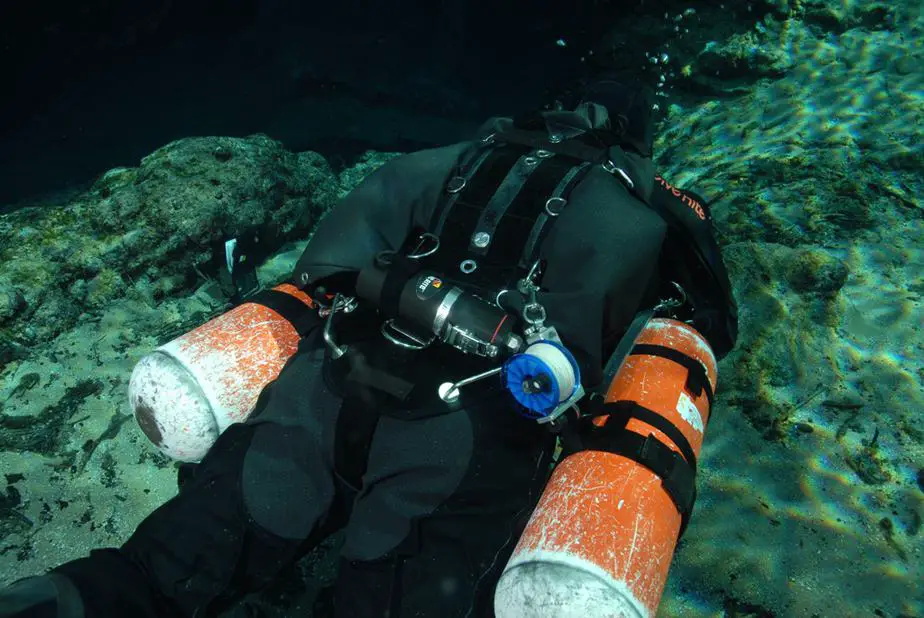
If you’re decompression diving, using compressed air for deco stops is not the greatest option. It’s not that it’s bad for you, rather it’s terribly inefficient; your deco stops will be quite long. On the other hand, breathing higher percentages of oxygen, perhaps even pure oxygen, at the correct flow rate and depth allows faster off-gassing of nitrogen.
Common mixtures are 50% or 80% nitrox, or 100% oxygen. However, one must be a trained technical diver to know how to avoid the risks and glean all the benefits of breathing pure oxygen. The dive shops won’t even fill your tank unless you show them the appropriate certification.
If you want to learn how to decompress using nitrox or pure oxygen, then you’ll need to be a certified nitrox diver or be a certified Tec 45 diver to rent tanks. To assist with your decompression, you need a technical diving computer that can calculate dives with pure oxygen.
Since there are risks associated with breathing pure oxygen underwater, it must be carefully planned out in advance. As we mentioned many times now, pure oxygen should only be used at depths shallower than 4 m / 13 ft.
Another common use for pure oxygen is to treat decompression sickness. Assuming the affected diver does not have a more pressing life-threatening injury that must be treated first, the primary first aid treatment is to let them breathe pure oxygen.
Since many scuba diving injuries affect how the body receives oxygen, supplying the diver with pure oxygen can increase their chances of making a full recovery, or at least prevent the symptoms from worsening
How do you get access to pure oxygen? All boat crews should have an emergency oxygen provision on hand so that the crew, instructors, dive guides, or dive buddies can assist someone who got bent.
Even though pure oxygen can help, it is not the solution. This is a temporary measure until the individual can get treated by health care professionals in a hyperbaric chamber.
Is pure oxygen for scuba diving the same as medical oxygen?
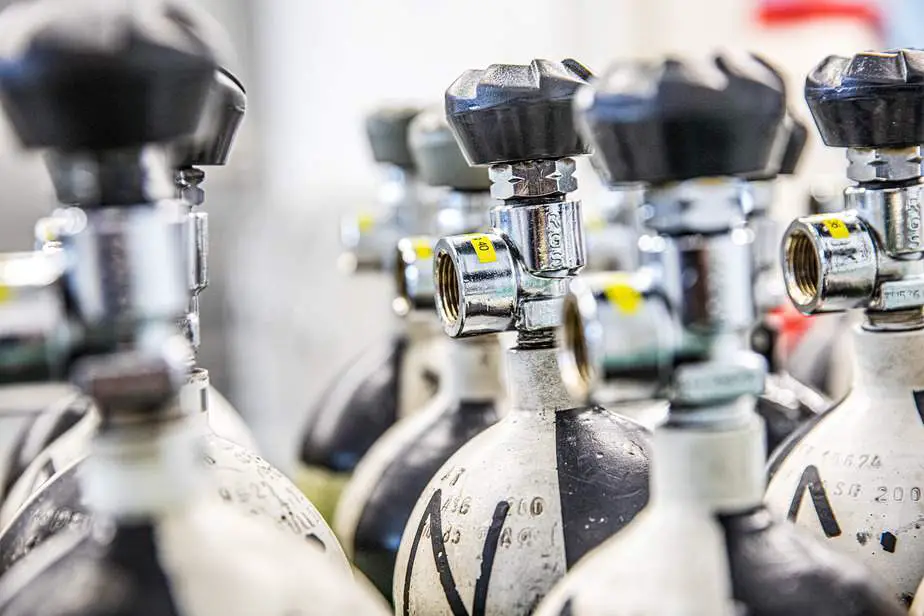
Manufacturers make different grades of oxygen depending on the application. Some examples are industrial oxygen, liquid oxygen, aviator’s breathing oxygen, and medical oxygen.
Medical oxygen is a bit of a special product because it’s strictly regulated and can only be purchased by authorized organizations. Your average scuba diver could not get ahold of medical grade oxygen if they wanted to.
However, despite the different grades of oxygen there are, medical grade oxygen is almost identical to the same product used for scuba diving. Pure oxygen for scuba diving must be at least 99.5% pure. This is because trace amounts of impurities can become toxic under extreme water pressure. Scuba oxygen should also have a low dew point.
If you are a stickler for quality, then you can check with a local supplier regarding what grades of oxygen are suitable for scuba diving, as this can differ depending on your location.
Is it safe to breathe gas mixes with higher oxygen concentration?
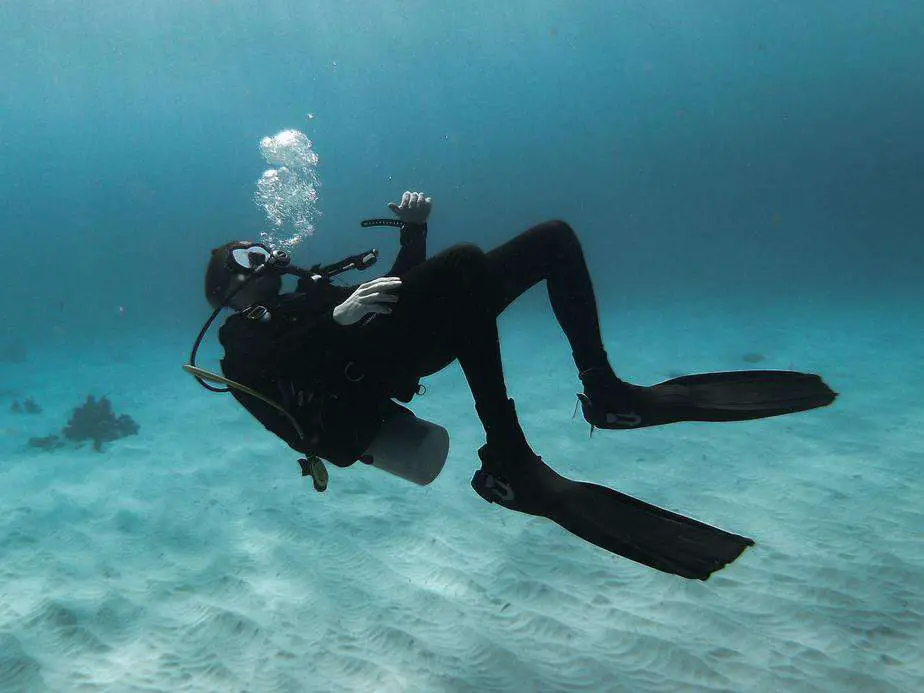
We have brought up many times now that there is a risk to breathing pure oxygen and that it must be done sparingly under specific conditions. However, it is relatively safe to breathe air that has been enriched with a higher concentration of oxygen than normal, called enriched air nitrox.
The major benefit of nitrox mixes is that it has lower nitrogen concentration due to its higher oxygen concentration. At recreational depths, this allows divers to dive for much longer without exceeding their no-decompression limit. It is a misconception that nitrox helps divers reach deeper depths; on the contrary, due to the higher oxygen concentration, it can cause oxygen toxicity at shallower depths.
Another benefit of nitrox for technical diving is that it can help speed up the decompression times during a deco stop. For reasons beyond the scope of this article, nitrogen is able to be safely released faster from the tissues.
Using enriched air whether for recreational or technical diving requires additional training. You should carefully plan out all dives, but particularly those where you are using multiple gas mixes or breathing anything other than compressed air.
Parting words
In this article, we’ve gone over the pros and cons of breathing pure oxygen for scuba diving. There are some very specific applications when it’s safe to use pure oxygen, or at least enriched air nitrox, however generally speaking, pure oxygen is not used by recreational divers.
Due to the risks associated with pure oxygen, it requires additional training and special equipment that can handle it. Pure oxygen can only be breathed at extremely shallow depths to speed up the decompression time; used for any other purpose and it can quickly lead to oxygen toxicity.
Filling a tank with pure oxygen is also about ten times more expensive than compressed air. On top of that, you will not be allowed to fill a tank with enriched air if you do not have the proper certification.
When a diver has decompression sickness, the dive boat should have a tank of pure oxygen on hand for the victim to breathe. This can temporarily stop the condition from worsening, however they need to go to a hospital and get treated in a hyperbaric chamber.

